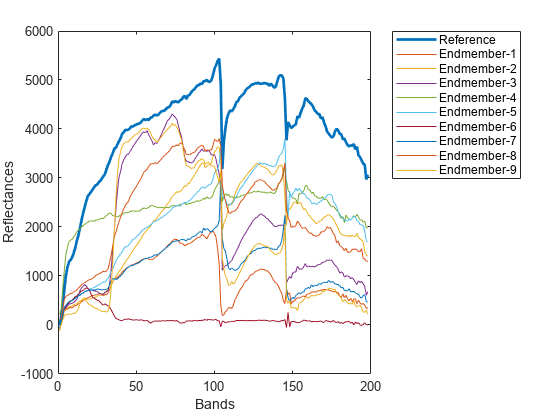sidsam
Measure spectral similarity using spectral information divergence-spectral angle mapper hybrid method
Description
score = sidsam(inputData,refSpectrum)inputData and the specified reference spectrum
refSpectrum by using the spectral information divergence-spectral
angle mapper (SID-SAM) hybrid method. Use this syntax to identify different regions or
materials in a hyperspectral data cube. For information about the SID-SAM method, see Algorithm.
score = sidsam(testSpectrum,refSpectrum)testSpectrum and reference spectrum refSpectrum
by using the SID-SAM hybrid method. Use this syntax to compare the spectral signature of an
unknown material against the reference spectrum or to compute spectral variability between
two spectral signatures.
Note
This function requires the Hyperspectral Imaging Library for Image Processing Toolbox™. You can install the Hyperspectral Imaging Library for Image Processing Toolbox from Add-On Explorer. For more information about installing add-ons, see Get and Manage Add-Ons.
The Hyperspectral Imaging Library for Image Processing Toolbox requires desktop MATLAB®, as MATLAB Online™ and MATLAB Mobile™ do not support the library.
Examples
Input Arguments
Output Arguments
Algorithms
References
[1] Chang, Chein-I. “New Hyperspectral Discrimination Measure for Spectral Characterization.” Optical Engineering 43, no. 8 (August 1, 2004): 1777. https://doi.org/10.1117/1.1766301.
Version History
Introduced in R2020b
See Also
spectralMatch | readEcostressSig | sid | hypercube | jmsam | ns3 | sam



